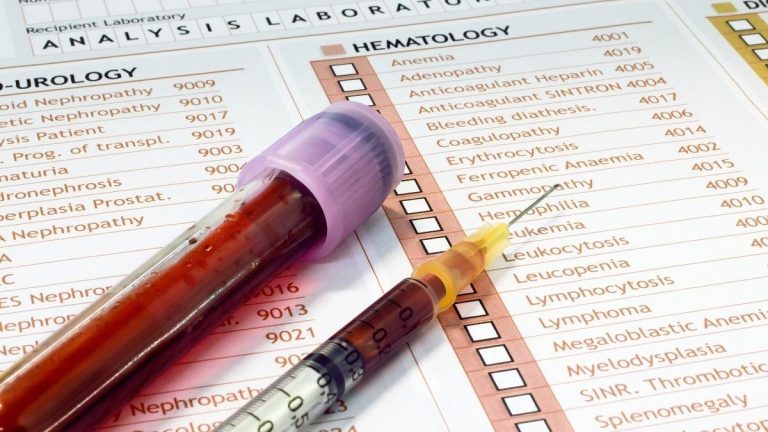
Blood tests are very useful tools for evaluating liver function and being able to analyze the liver and the diseases that affect it.
Along with the blood test, tests such as ultrasound, CT, MRI, and liver biopsy complete the study of the liver.
What are transaminases?
When liver disease is suspected, a blood test is used to analyze the levels of a series of substances that the liver releases excessively in case of disease: transaminases.
To obtain an accurate diagnosis of a liver problem, the levels of three liver enzymes are first requested:
Aspartate amino transferase (AST). It is also known as glutamic oxaloacetic transaminase (GOT).
Alanine aminotransferase ( ALT ). Also known as glutamic pyruvic transaminase (GPT).
Gamma-glutamyltransferase or gamma-glutamyl transpeptidase ( GGT or γGT ).
On the other hand, another series of parameters related to the functioning of the liver is also studied. Among them are bilirubin and alkaline phosphatase, among others.
High transaminases
Normal levels of both AST / GOT and ALT / GPT are below 40 IU / L. These enzymes can reach higher concentrations in various liver diseases, such as autoimmune hepatitis. Also in diseases in which metals accumulate, such as hemochromatosis (iron accumulates abnormally in the liver), or Wilson’s disease (in which another metal, copper, accumulates in the liver). Finally, other situations such as alcohol intake can also increase the levels.
Very high transaminase levels are characteristic of acute liver injury. This can be caused by viruses ( viral hepatitis ), medications, chemical poisons, or ischemia (lack of blood supply).
However, in advanced liver cirrhosis, with extensive and irreversible liver damage, the values may be normal.
GGT
Normal GGT values are below 45 IU / L. In men it can reach 65 IU / L, being, in general, values proportional to body mass.
GGT values are usually elevated in cases of alcoholism, which is why it has been proposed as a biochemical indicator to detect alcohol abuse. GGT levels are also increased in cases of cirrhosis, pancreatitis, bile duct obstruction, and certain tumors.
Bilirubin
Bilirubin is a pigmented substance resulting from the breakdown of hemoglobin present in red blood cells. It is eliminated through the liver, which excretes it along with the bile. Bile is stored in the gallbladder, from where it is poured into the intestine.
Total bilirubin plasma levels should be less than 1.3 mg / dL. There are two fractions, the direct or conjugated (attached to another molecule that facilitates its excretion through the bile), which is normally less than 0.4 mg / dL, and the indirect or unconjugated.
When bilirubin is not adequately removed through the liver and bile ducts, its levels increase in the blood. This occurs in various liver diseases, such as hepatitis, bile duct obstruction (due to gallstones, pancreatitis, bile duct tumors or pancreatic cancer, etc.).
On the other hand, bilirubin levels can also be increased due to an excess of its production, as occurs in cases of hemolytic anemia, in which there is excessive destruction of red blood cells.
Alkaline phosphatase
Normal alkaline phosphatase levels range from 20 to 125 IU / L. This enzyme, in addition to the liver, is also produced in the bones or the placenta. It can increase in the case of liver disease or bile duct obstruction, but also in the case of bone diseases or certain tumors, so it must always be assessed in the context of each patient.







